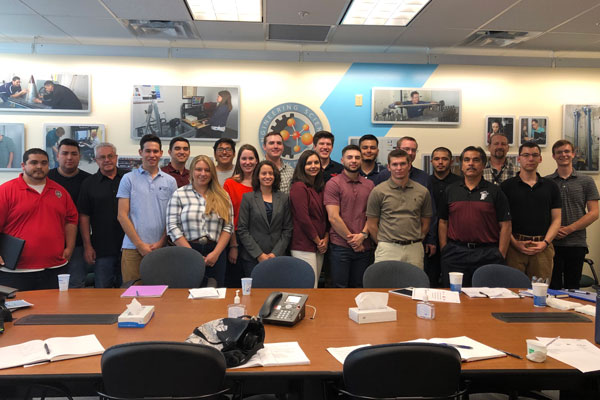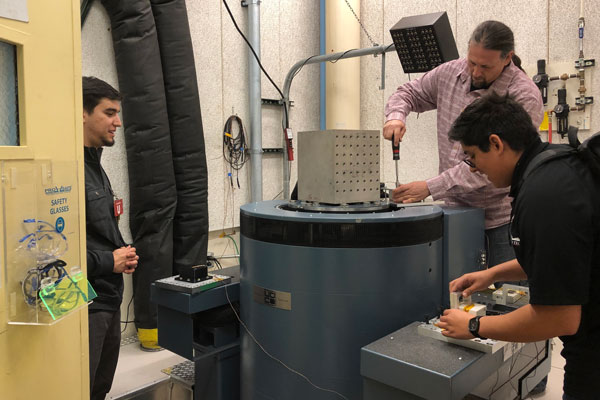New Mexico university teams complete multidisciplinary engineering design challenge

Three university teams from New Mexico experienced firsthand what it might be like to tackle a national security project at Sandia through the NM Capstone Challenge.
Last September, 21 undergraduate engineering students — one team each from the University of New Mexico, New Mexico State University and New Mexico Tech — were briefed on the mission, sponsored by Sandia’s Academic Alliance program and Diane Peebles, the Labs’ New Mexico partnerships manager.
The teams had six months to develop an integrated sensing device capable of monitoring multiple environmental conditions during ground transportation of an asset or payload, a problem inspired by Sandia engineer Karl Walczak, who works in reentry systems development.
In addition to measuring vibration, acceleration and temperature and determining signal processing approaches, the students needed to develop a communications app and innovatively incorporate proximity sensors to identify any nearby objects. Everything had to fit in a box no larger than 600 cubic centimeters (about half the size of a Girl Scout cookie box).
Throughout the project, Dennis Croessmann, Fernando Bitsie, Abby Carnali and the experimental mechanics and dynamics group provided technical support and guidance. The student work was monitored by engineering professors from the three universities.

In March, right before the state’s stay-at-home order, a student from each team brought their devices to Sandia’s Environmental Test Facility to see how their designs would measure and withstand extreme temperatures, intense vibrations and severe shock. The students used the data received from their device tests to identify design modifications they needed to make.
A Sandia road test was scheduled as part of the assurance and judging process, but was preempted by the pandemic. Two of the teams, however, were able to take their devices out on their own to see how they functioned.
Sandia mechanical engineer Abby Carnali, who works in vibrations and acoustics, said, “It’s wonderful that the students took it upon themselves to do their own road tests. This just demonstrates how engaged they were.”
Showing their work
On April 24, the challenge culminated in a Skype meeting where each team presented an overview of their project design, engineering approach, hurdles they encountered, any modifications they made to their devices after testing and final results.
The NM Capstone Challenge illustrated to students how their engineering education could be put to use and helped them gain other skills critical to job success.
“Both the competition aspect and the multidisciplinary challenge helped my students increase their project management and teaming skills, in addition to demonstrating their engineering capabilities,” said Ramiro Jordan, UNM professor and associate dean of engineering for international programs.
Curtis O’Malley, NMT assistant professor of mechanical engineering, said the Sandia Capstone teams made more progress and accomplished more on their projects than other capstone teams prior to the COVID-19 limitations.
Gabe Garcia, assistant dean of student success and experiential learning in the NMSU Department of Mechanical & Aerospace Engineering, agreed that the project provided an exceptional learning experience for all of the student teams.
“Growing the pipeline is about more than just recruiting,” said Ben Cook, Sandia senior manager of research and academic programs. “Through activities like this, we have the opportunity to grow students’ understanding of the type of work Sandia does for the nation every day.
“If we can help them appreciate the kind of national security technical challenges they can help solve after they graduate, then we’ve done a lot more than just highlight Sandia as a possible employer. We’ve helped the broader national security community.”